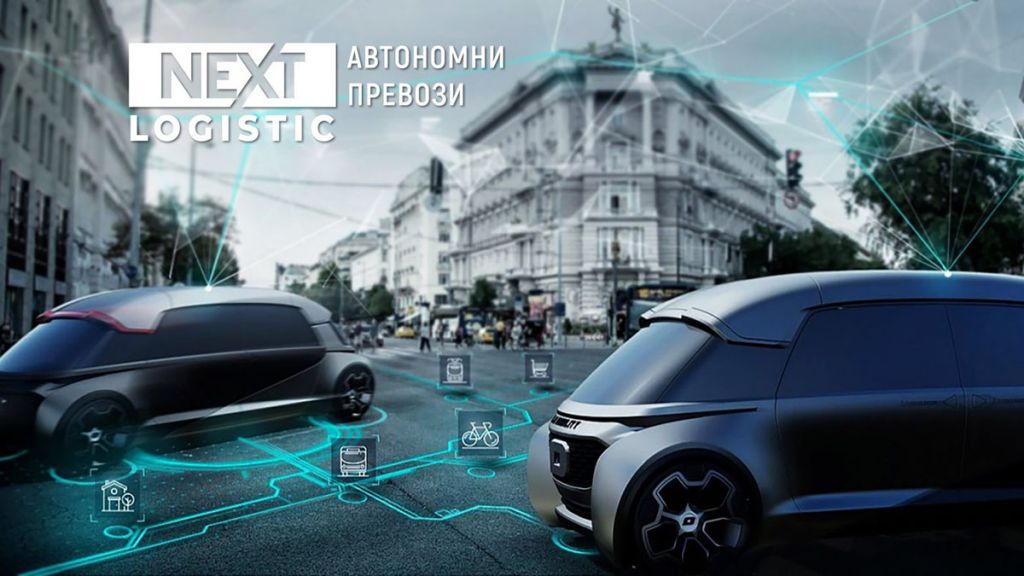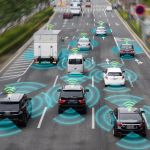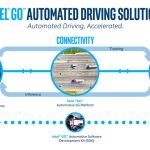Autonomous transportation – myth or reality?
2020
In 2020, major technology companies are competing in the development of autonomous vehicles. Fully automated, autonomous, or “self-driving” vehicles are defined as “those in which the operation of the vehicle is carried out without the direct involvement of the driver…”.
For the sake of standardization, several definitions have been adopted for the different levels of automation, and NHTSA has accepted the international SAE definitions for levels of automation:
- Level 0
The human performs all driving tasks. - Level 1
An Advanced Driver Assistance System (ADAS) can assist with either steering or braking/acceleration. - Level 2
The vehicle’s ADAS can control both steering and braking/acceleration under certain circumstances. The driver must remain fully attentive and perform the rest of the driving tasks. - Level 3
The vehicle’s ADAS can perform all aspects of the driving task under certain conditions. In those conditions, the driver must be ready to take over at any time when the system requests. In all other situations, the driver is responsible for driving. - Level 4
The vehicle’s ADAS can perform all driving tasks and monitor the environment — essentially handling all driving — under specific conditions. In those circumstances, human attention to the driving process is not required. - Level 5
The vehicle’s ADAS can perform all driving tasks under all conditions. Humans in the vehicle are passengers only and have no role in driving.
ADVANTAGES
Among the advantages of a system of autonomous vehicles are:
Safety – traffic accidents caused by human errors such as delayed reaction time, distraction, or aggressive driving will be significantly reduced (by around 90%).
Cost reduction – safer travel will lead to a significant decrease in insurance premiums, while smoother traffic flow will improve efficiency and lower fuel costs.
The main challenges for engineers include the inability of artificial intelligence to function reliably in chaotic urban environments, as well as the risk that the onboard computer or the communication network between autonomous vehicles could be compromised.
5G connection
For maintaining a reliable connection with other vehicles and the cloud for data storage, as well as enabling over-the-air updates, providers require increasingly higher data transfer speeds and faster response times – not just in seconds, but in milliseconds.
This is why the adoption of the new 5G wireless technology is essential. It allows the transfer of a much larger volume of data (around 20 times faster than current 4G), reduces latency, and enables the connection of far more devices compared to the existing networks.
The technology giant Intel offers a comprehensive solution in this field through its Intel® GO™ service.
In freight transport
Autonomous vehicles are the future of transportation. Their enormous potential, along with the positive public and governmental attitude, drives continuous development. Experts are unanimous that autonomous driving will first be implemented in trucks and long-distance transport, rather than in passenger cars and urban environments. For more than a year now, autonomous trucks have been tested and used in the United States. In 2019, successful trials were also carried out in Germany.
In freight transport, the benefits can be substantial. On the one hand, the daily mileage of trucks will significantly increase, currently restricted mainly due to concerns about driver fatigue and the risk of falling asleep at the wheel. On the other hand, computer-controlled driving and platooning can reduce fuel consumption by 7–10%, which is a major advantage for carriers and helps decrease the harmful impact on the environment. The developed systems allow individual trucks to maintain constant communication with each other through cameras, radars, and the internet.
Self-driving trucks
A thorough study of the self-driving truck shows that the vehicle can process information in special situations without difficulty. For example, the truck will automatically shift slightly to the left, creating enough space for a car that needs to pull over into the emergency lane for any reason. All of this happens through prior data exchange, which is extremely useful in emergencies, accidents, and similar situations.
Self-driving trucks also allow the driver, who has pre-booked a parking spot at a rest stop, to handle orders and maintain communication via video calls while the vehicle is in motion. The driver only needs to take the wheel when the truck has to leave the highway and head toward the next destination, after which the system resumes autonomous control.
Thanks to this autonomous vehicle, self-driving trucks are becoming the engineering trend for decades to come when it comes to efficiency, safety, and connectivity. Currently, with factors such as prolonged attention, demanding schedules, and heavy traffic intensity, the daily tasks faced by every truck driver make their responsibilities highly labor-intensive.
A self-driving truck will eliminate many of the responsibilities and stress of each commercial vehicle driver, providing better rest and peace of mind. In turn, this would increase the overall efficiency of the freight transport market.
Technologically, all obstacles to the implementation of such systems have been overcome. The only barrier that remains is regulation. Introducing autopilot systems in trucks would be a good way for the general public to gradually get used to the idea of autonomous transport overall, since studies so far show that most people would not even dare to step into a computer-driven car.
Every improvement in this field could lead to safer mobility, lower transport costs, social benefits, reduced pollution, and shorter timelines for the adoption of this technology – ultimately making our lives easier.
Share
Contact us
Fill out the form to request transportation services.
We will contact you as soon as possible.












